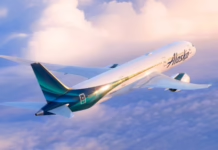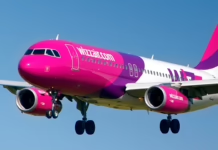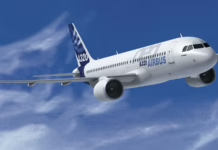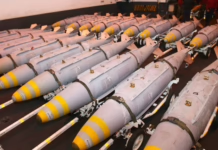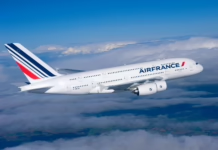Airlines operate multimillion-dollar jets for decades, but the financial calculations determining when a 737 stays in service versus heading to the desert remain closely guarded. Here’s the economic reality behind aircraft longevity.
Every time a Boeing 737 touches down after another routine flight, it edges closer to a financial calculation that airlines hope passengers never think about. The jet may look identical to one that rolled off the Everett assembly line last month, but inside the spreadsheets of airline finance departments, these aircraft exist on vastly different timelines—each with its own intricate cost-benefit equation determining whether it stays in service or heads to the desert.
For more than a century, Boeing has built jets that carry millions of passengers annually, from the revolutionary 707 that ushered aviation into the jet age to the 747 “Queen of the Skies” that became synonymous with long-haul travel. Last year alone, Boeing Commercial Airplanes generated more than $22 billion in revenue from its roughly 50,000 employees spread across major manufacturing facilities in Everett, Washington, and Charleston, South Carolina. But the real story isn’t just in building aircraft—it’s in understanding what happens during the decades after they leave the factory floor.
The financial reality airlines rarely discuss is that aircraft represent some of the most expensive depreciating assets in commercial aviation. While passengers may assume an airliner’s value follows a simple downward trajectory, the economics are far more nuanced. The decision to keep flying a 20-year-old 737 versus retiring it for a newer model involves complex calculations weighing maintenance costs, fuel efficiency, operational flexibility, and the robust secondary markets that have emerged around aging airframes.
The Lifecycle Begins
When Boeing delivers a new narrowbody like the 737 or a widebody such as the 777, airlines typically plan for an operational lifespan spanning 20 to 30 years in frontline service. During this period, the aircraft accumulates flight hours and cycles—each takeoff and landing counts as one cycle—that determine its structural fatigue and maintenance requirements. For narrowbody jets, the average commercial service life hovers between 12 and 15 years before airlines begin considering their next chapter. However, with proper maintenance and refurbishments, many 737s continue flying for 25 years or longer, particularly those operated by carriers focused on maximizing asset utilization rather than maintaining the newest fleets.
Widebody aircraft follow different economic patterns. The 777 and 787 Dreamliner typically average 20 to 25 years in commercial service, while older 747s have demonstrated remarkable longevity, often flying for three decades or more before retirement from passenger operations. The newer 787, introduced in the early 2010s, remains relatively young across global fleets, with average ages well under 10 years.
Narrowbody jets benefit from inherently lower maintenance costs and simpler systems compared to their larger widebody counterparts. This cost advantage, combined with their versatility on short- to medium-haul routes, explains why some 737 variants continue operating well into their fifth decade. According to data from ch-aviation, the oldest 737s still flying include a 737-200C operated by Aviatrade Congo at nearly 57 years old, and several aircraft in military service exceeding 50 years. While these represent extreme outliers, they underscore the fundamental durability Boeing engineered into its designs.
When Commercial Service Ends
The moment an aircraft exits frontline passenger operations doesn’t signal the end of its economic usefulness. Instead, airlines unlock alternative revenue streams through secondary markets that have evolved into sophisticated global networks. For many Boeing jets, this transition represents a second life that can extend their operational utility by another 10 to 20 years.
Cargo conversion has become the most lucrative path for retiring passenger aircraft. The process involves removing seats, reinforcing cabin floors, and installing cargo door systems—modifications that transform passenger jets into freighters capable of hauling everything from overnight packages to heavy industrial equipment. Major logistics companies like FedEx Express and UPS have built their operations around these converted aircraft. FedEx currently operates 148 Boeing 767 freighters and 85 Boeing 757 conversions, while UPS flies 98 767s and 75 757s. Other cargo specialists like Atlas Air, Kalitta Air, and Cargojet Airways maintain substantial fleets of converted Boeing widebodies, including 43 Boeing 747 freighters at UPS and 65 at Atlas Air.
Smaller regional carriers and developing market airlines represent another significant secondary market. These operators often cannot justify the capital expenditure required for new aircraft but still need reliable airliners for daily operations. A well-maintained 15- to 20-year-old Boeing jet offers them modern performance at a fraction of new-aircraft costs.
Charter operators pursue yet another strategy, refurbishing retired airliners with premium interiors ranging from high-density seating for sports teams and tour groups to luxury configurations featuring lounge areas and enhanced amenities for corporate clients and high-end leisure travel.
The Final Chapter
Eventually, even the most durable Boeing aircraft reach a point where continued operation no longer makes financial sense. When that moment arrives, most jets head to specialized storage facilities—commonly called boneyards—located in arid regions like Arizona, California, or Spain. The dry desert climate minimizes corrosion and weather-related deterioration while airlines or leasing companies determine the airframe’s ultimate fate.
Some aircraft remain in ready-for-service condition during storage, allowing operators to reactivate them quickly if market demand suddenly increases. These jets avoid the preservation procedures typically applied to long-term storage aircraft, keeping them viable for rapid return to operations.
Most retired aircraft, however, undergo systematic parting out—a meticulous process where mechanics extract valuable components for resale or refurbishment. Engines, avionics systems, and landing gear command premium prices in the robust market for certified aircraft parts. After valuable systems are removed, the remaining airframe is typically shredded and recycled, with aluminum and other materials entering new supply chains.
The Science of Staying Airborne
Behind every aircraft’s extended operational life lies a carefully orchestrated maintenance program that represents one of aviation’s most rigorous engineering disciplines. Modern airliners are designed to endure tens of thousands of flight hours and cycles, but achieving this longevity requires systematic inspections that detect even microscopic signs of fatigue or corrosion before they compromise safety.
Commercial aircraft maintenance follows tiered inspection protocols. A-Checks occur every few hundred flight hours and can typically be completed at the gate between flights. These frequent inspections ensure routine systems remain within operational parameters. C-Checks represent far more comprehensive examinations requiring aircraft to be taken out of service for several days while technicians inspect multiple systems and airframe components.
The most intensive procedure—the D-Check—occurs every six to ten years and can occupy technicians for several weeks. During a D-Check, mechanics essentially strip the aircraft to its bare structure, inspecting every major component and system. This heavy maintenance event costs millions of dollars but represents the price of ensuring continued airworthiness for aging airframes.
These maintenance investments illustrate the delicate balance airlines manage between engineering precision and regulatory compliance. Every hour an aircraft spends in maintenance represents lost revenue opportunity, yet skipping or deferring inspections jeopardizes the safety margins that allow aircraft to achieve their designed lifespans. For airlines operating older fleets, maintenance expenses steadily increase as components age and require more frequent attention. Eventually, these costs exceed the economic benefits of keeping the aircraft operational—the invisible line that defines retirement for most commercial jets.
The financial calculus behind aircraft longevity remains largely invisible to passengers, yet it drives fundamental strategic decisions at every airline. When carriers quietly retire their oldest jets or announce fleet modernization programs, they’re executing carefully modeled analyses that weigh maintenance costs against fuel efficiency gains, operational flexibility against capital expenditures, and market expectations against bottom-line profitability.
Boeing’s ability to design aircraft that remain economically viable for three decades or longer represents one of the company’s most valuable but least celebrated achievements. While headlines focus on new aircraft deliveries and technological innovations, the real measure of engineering excellence lies in jets still generating revenue after 25 years of daily service—aircraft that have carried hundreds of millions of passengers while delivering returns that justified their initial purchase price many times over.
The next time you board a Boeing jet, you’re not just stepping onto an aircraft. You’re entering a flying asset whose economic journey began years or decades earlier and will continue long after your flight concludes—through cargo operations, secondary carriers, and eventually, recycling facilities where even its final materials find new purpose. That invisible economic lifecycle remains the industry’s most closely guarded calculation, one that passengers never see but airlines never stop monitoring.

Key Takeaways
- Boeing commercial aircraft operate 20-30 years in frontline service, with narrowbodies averaging 12-15 years and widebodies 20-25 years, though proper maintenance can extend lifespans significantly beyond these averages.
- Secondary markets generate substantial value after passenger retirement, with cargo conversion extending operational life 10-20 years. Major carriers operate hundreds of converted Boeing freighters, making this the most lucrative post-retirement path.
- Maintenance programs determine aircraft longevity, with tiered inspections from routine A-Checks to comprehensive D-Checks every 6-10 years. These systematic procedures enable jets to achieve designed lifespans through rigorous fatigue and corrosion detection.
- Economic calculations drive retirement decisions, balancing maintenance costs against operational benefits. When expenses exceed revenue potential, aircraft move to desert storage facilities for parting out or potential reactivation.




